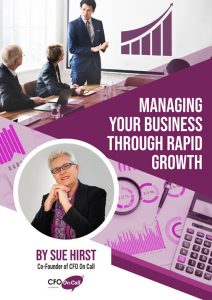The start of the financial year is a great time to understand how well your business has performed for the past year and what are your targets for next year.
A ‘Financial Roadmap’ will help improve profit and cash flow, by ensuring funds will be available to spend on developing new products and services, marketing, sales, operations, customer service and human resources. To grow a business you must have funds available at the right time.
The easiest way to develop a financial roadmap is to have a Budget and a Cash Flow Forecast. Here’s the difference between the two:
A Budget is a financial plan – what you are going to sell – what it is going to cost and what overheads you are likely to incur. It also includes finance costs such as interest. The budget sets out how much profit or loss the business is planning to make, usually on a monthly basis.
A Cash Flow Forecast is a plan of when the cash will flow into and out of the business. It’s important to have both, because a budget may show that you’re going to make profit, but customers take time to pay and suppliers require payment, often before customers have paid you. It’s vital to plot this all out in black and white, so that you can see where the ‘peaks and troughs’ are likely to occur and plan how your business cash flow management should work.

A budget may be required by lenders and only done for that purpose, but do a budget for yourself. As a business owner, it provides you with a fantastic financial roadmap to help clarify what everyone needs to work towards.
People often say “I can’t do a budget because I don’t know exactly how much I’m going to sell”. This is a reasonable enough statement, but shouldn’t put you off developing a budget with best estimates.
The best way to start a budget is to work out your ‘break-even point’. Break-even point helps you to work out how much you need to sell to make neither a profit nor a loss i.e. a zero result. Obviously this isn’t what you’re in business for, but it will give you targets to work towards and to avoid losses. To work out your ‘break-even point’, begin with your overheads i.e. the fixed expenses you incur whether you sell anything or not, such as rent, permanent staff wages, equipment leases etc.
You then need to know what your gross margin is on sales. Gross margin is the percentage you make on sales after direct costs of your product or service, such as cost of the actual product or labour and materials on jobs. For example if you know that products or jobs cost you 40% (on average) of your sale price, that means you’ve got a 60% gross margin left to cover your fixed expenses. If your yearly fixed expenses are $600,000 you will need to sell $1,000,000 to breakeven.
Example Calculation:
Monthly Fixed Expenses = $50,000
Cost of Goods percentage = 40%
Gross margin = 60%
Formula = Monthly Fixed Expenses / Gross Profit Margin
= 50,000 divided by 60% = $83,333.33
$83,333.33 is the monthly breakeven sales figure in this example.
Once you know your ‘breakeven’ sales figure, you can use this as a basis for your budget, by entering the monthly figures into a spreadsheet and play around with increasing and decreasing the monthly sales, to see what would be the impact of changes.
You could also work it backwards to calculate what profit you desire and therefore what you need to sell to achieve the result, or if you can find ways to reduce your direct costs, how much impact that could have on your profit.
Cash flow forecasting is similar to the budget, but looks at the situation from a cash perspective, rather than a profit one. You begin with your opening bank balance then plot in monthly what income you expect to receive, based on when and how much customers pay, against what you expect to pay out, based on fixed monthly expenses and amounts owed to suppliers.
The Cash Flow also includes items such as tax, repayment of loans and dividends, which aren’t included in the Budget. By doing this forecast, you can see what will be your closing bank balance for each month and where you might experience ‘peaks and troughs’.
Once you know the amount of the ‘peaks and troughs’ you can play around with a spreadsheet, to work out how to retain a positive bank balance or when you may need funds to cover a shortfall.
By doing this at the beginning of the year, you can approach lenders with a clear picture of your requirements, rather than rushing in ‘cap in hand’ begging for help to cover an unexpected shortfall.
Both of these financial tools will help you to sleep easier at night and be able to plan for the best or worst in your business.

Better still book in your Financial Light Bulb Moment











